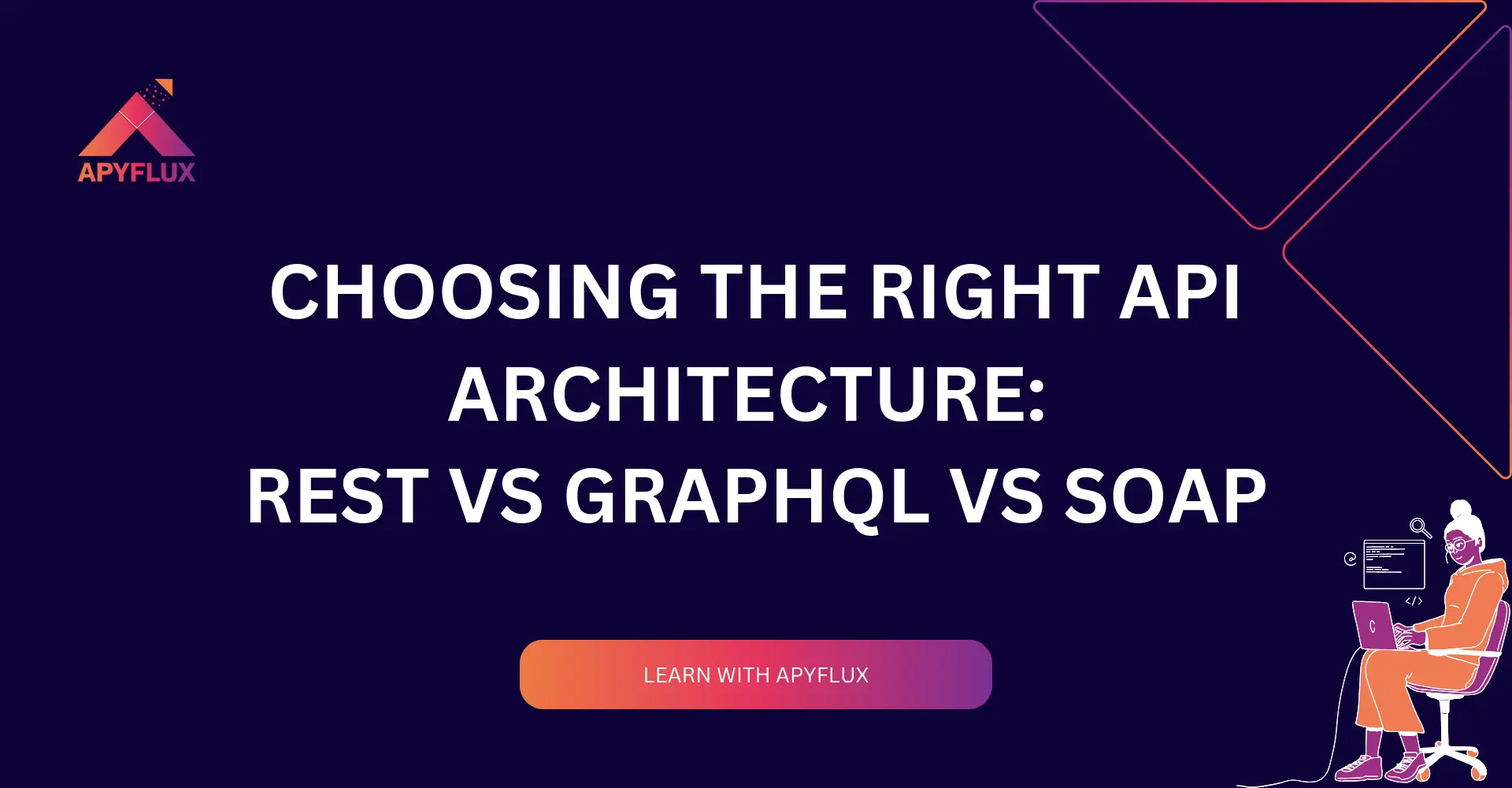
##Introduction
Hey! Developers, in the era of API development, Application Programming Interfaces architecture is the main pillar that communicates between systems, users, and businesses. Choosing the right API architecture isn’t just a technical decision—it’s a strategic one that impacts scalability, performance, and development velocity. If you’re planning to start your businesses in SaaS products or integrating complex legacy systems, the right choice can boost your project’s success.
Apyflux API blogs can guide developers with reliable, practical resources for smarter decisions. In this blog, we have explained about selecting the right API Architecture like REST, GraphQl, SOAP, etc.
API (Application Programming Interfaces) architecture is the software components (like apps, servers, databases) that communicate with each other via APIs. It’s a framework that facilitates easy data exchange, robust system integration, and scalable operations as your platform grows. There are three important architectures - REST, GraphQL, and SOAP APIs. This architecture behaves differently with different applications.
REST (Representational State Transfer) is the most popular style of API architecture today. It's built on standard HTTP protocols, making it simple and accessible.
Pros: Easy caching, excellent scalability, broad adoption across industries. Cons: Over-fetching or under-fetching data in some cases.
In the grand conversation of REST vs GraphQL, REST’s simplicity often wins for traditional applications.
GraphQL is a newer, query-based API architecture designed for precise, efficient data fetching. Unlike REST, where you often fetch entire resources, GraphQL lets clients request exactly what they need.
Benefits of GraphQL:
Best for: Real-time apps, complex relational data models, and platforms requiring frequent iteration. If you're facing the REST vs GraphQL dilemma, and you need high flexibility, GraphQL is a strong candidate.
SOAP APIs (Simple Object Access Protocol) are the veterans of API architecture. They emphasize security, reliability, and strict standards.
Why is SOAP still relevant?
SOAP APIs shine when stability and legacy system integration matter more than agility.
When choosing the right API architecture, it often comes down to REST vs GraphQL. Here's a quick comparison:
| Feature | REST | GraphQL |
|---|---|---|
| Data Fetching | Fixed resources | Custom queries |
| Learning Curve | Easier for beginners | Steeper but powerful |
| Performance | May over/under-fetch data | Optimized responses |
| Tooling | Broad ecosystem | Rapidly growing, modern tools |
Modern apps that prioritize user experience and complex data often lean towards GraphQL, but REST remains a solid choice for simplicity and widespread compatibility.
While REST, GraphQL, and SOAP APIs dominate, alternatives like gRPC, OData, and WebSockets have their place too:
Exploring these can be helpful when choosing the right API architecture for specialized needs.
Selecting the right style isn't just about technology; it’s about aligning with your project's vision. Consider:
Examples:
Need help structuring your decision? Check out the detailed checklist in the Apyflux API guide.
The Apyflux API guide was built with developers in mind. It’s a living, breathing resource packed with:
Before you commit your architecture to code, dive into the Apyflux API guide—it could save you countless hours (and headaches).
In the above paragraphs, we have explained API architectures like REST (most popular for web APIs), GraphQL (more flexible, great for complex data), and SOAP (older but highly secure, often used in banks and enterprises). You must choose the API architecture as per your business requirements. The right choice will make you build a performing software application.
It’s always preferred to have a through look at Apyflux API guide before choosing the API architecture for business. Here you can get a very informative, descriptive and practical approach guide to grow your business faster, smarter and flawlessly.
Your architecture is the foundation of your future—let's build it right.
Hi there!
Let's help you find right APIs!